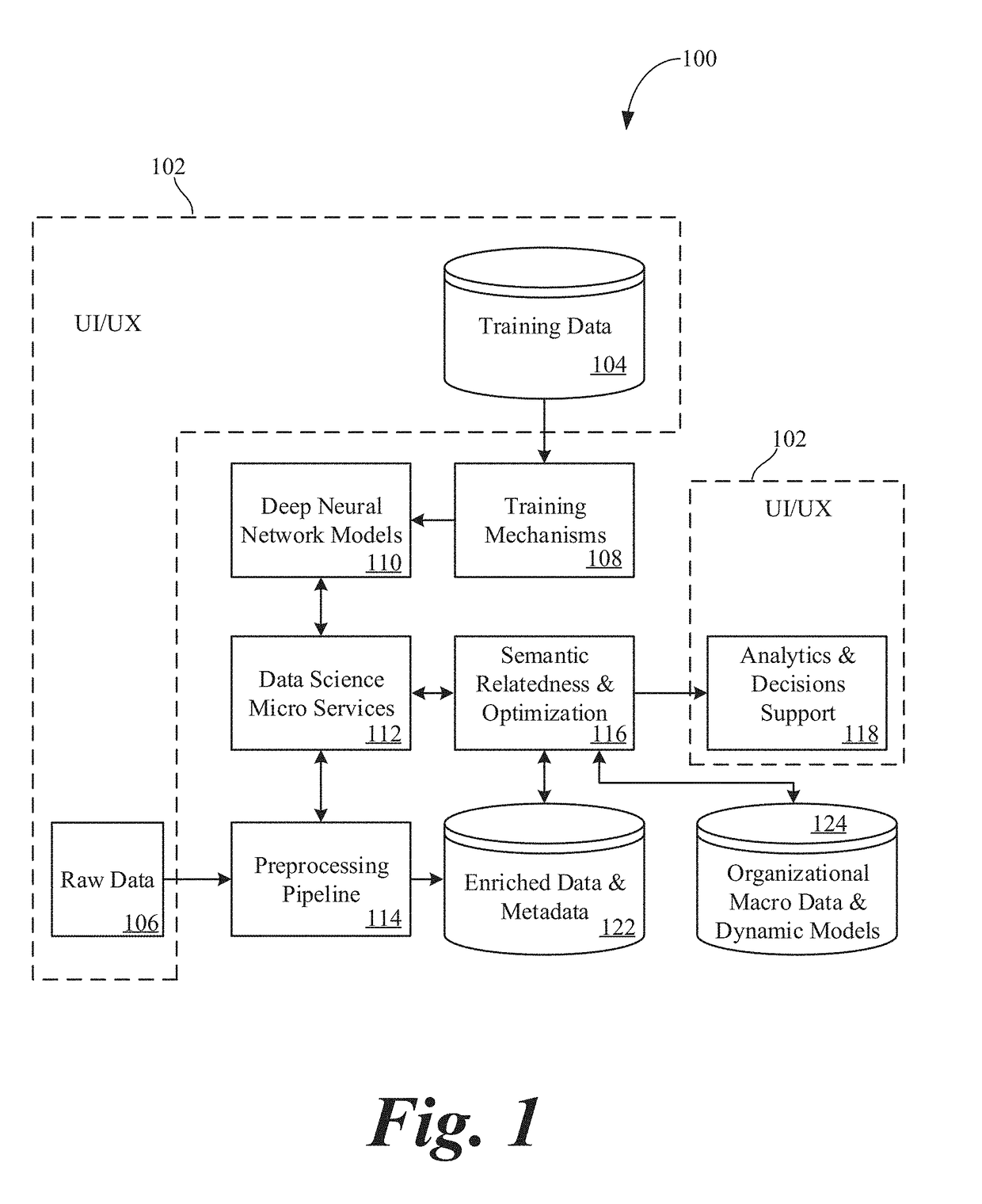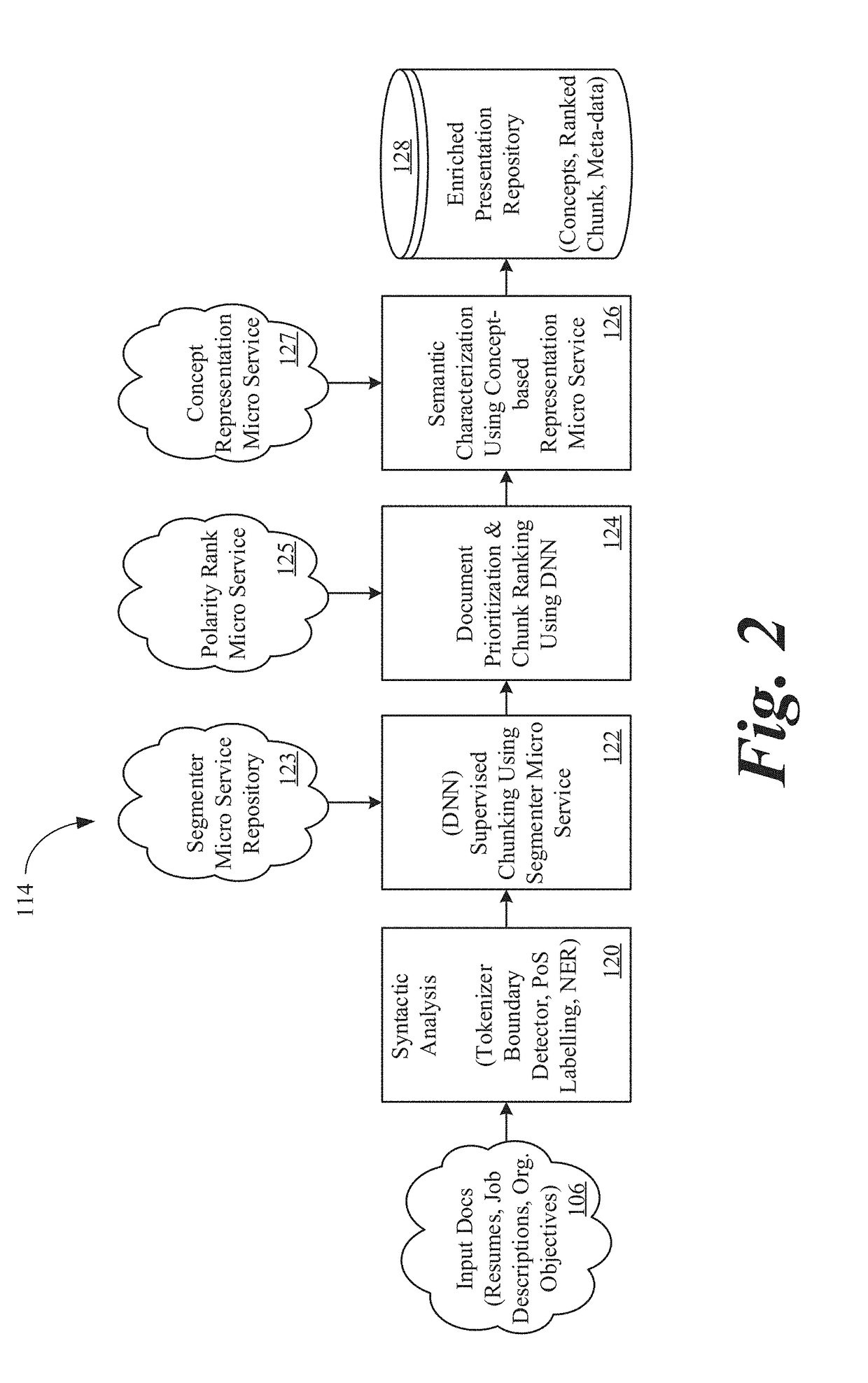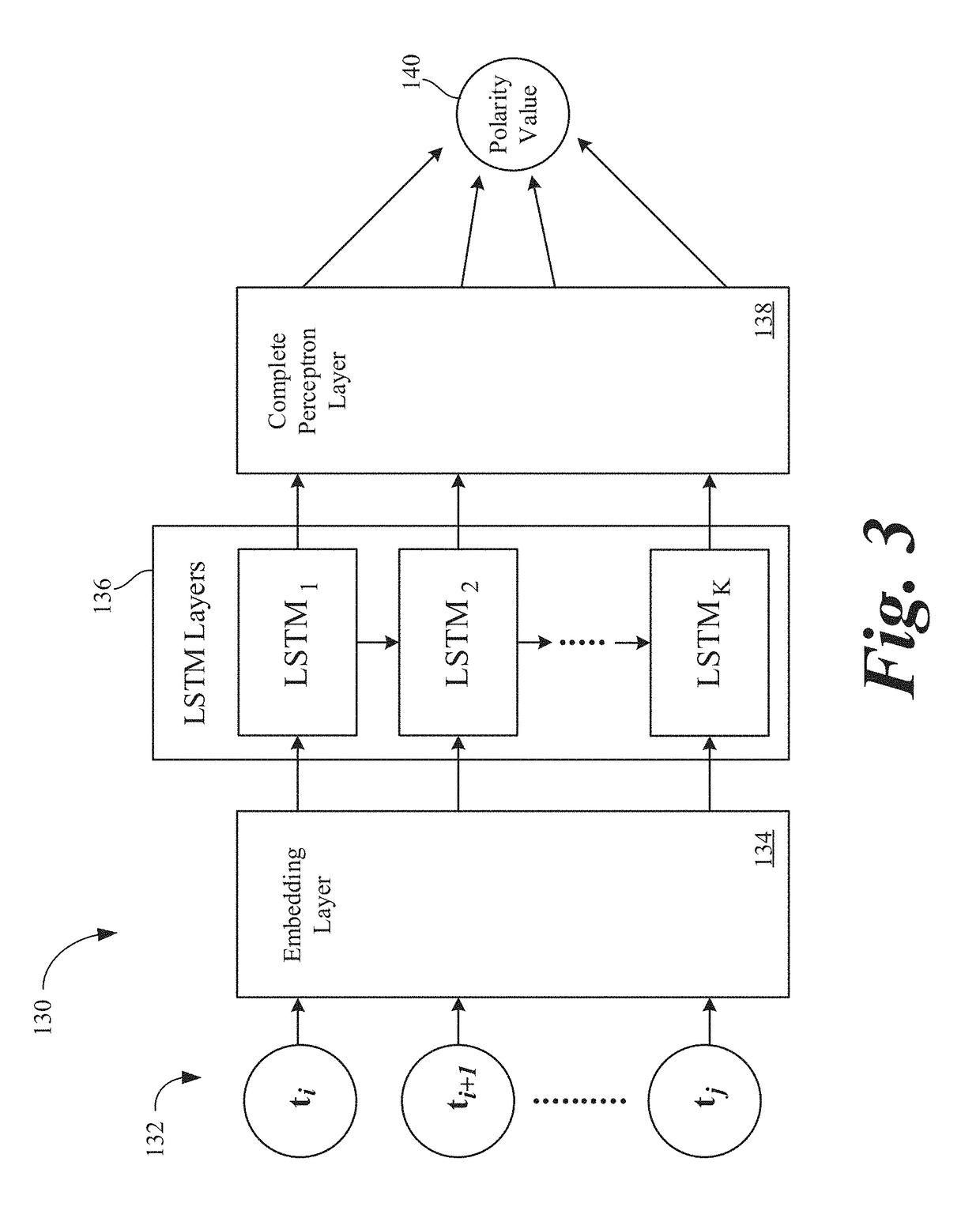Systems and methods to determine and utilize semantic relatedness between multiple natural language sources to determine strengths and weaknesses
a natural language and semantic relatedness technology, applied in the field of semantic analysis of natural languages, can solve the problems of inability to efficiently measure or analyze an entire workforce, lack of supporting evidence around capabilities, and inability to scale effectively, so as to achieve accurate representation and further processing
- Summary
- Abstract
- Description
- Claims
- Application Information
AI Technical Summary
Benefits of technology
Problems solved by technology
Method used
Image
Examples
Embodiment Construction
[0017]This document describes a computational system for analyzing an organizational talent pool and identifying skill gaps allowing the organization to achieve its goals in performing assigned tasks. Computational tools are provided for talent pool optimization and recommendation with respect to its evolving objectives and requirements. In accordance with a preferred embodiment of the present invention, computational components (tools) include: machine-learning models based on deep neural networks to process and extract information from a variety of information sources including resumes, organizational experience requirements, job descriptions, etc.; sematic models created for the extracted information to support similarity measurement among multiple information sources; establishment of relationships among multiple information sources in the form of organizational macro services and dynamic models; and optimization methods for solving the semantic relatedness, gap and talent analy...
PUM
 Login to View More
Login to View More Abstract
Description
Claims
Application Information
 Login to View More
Login to View More - R&D
- Intellectual Property
- Life Sciences
- Materials
- Tech Scout
- Unparalleled Data Quality
- Higher Quality Content
- 60% Fewer Hallucinations
Browse by: Latest US Patents, China's latest patents, Technical Efficacy Thesaurus, Application Domain, Technology Topic, Popular Technical Reports.
© 2025 PatSnap. All rights reserved.Legal|Privacy policy|Modern Slavery Act Transparency Statement|Sitemap|About US| Contact US: help@patsnap.com



